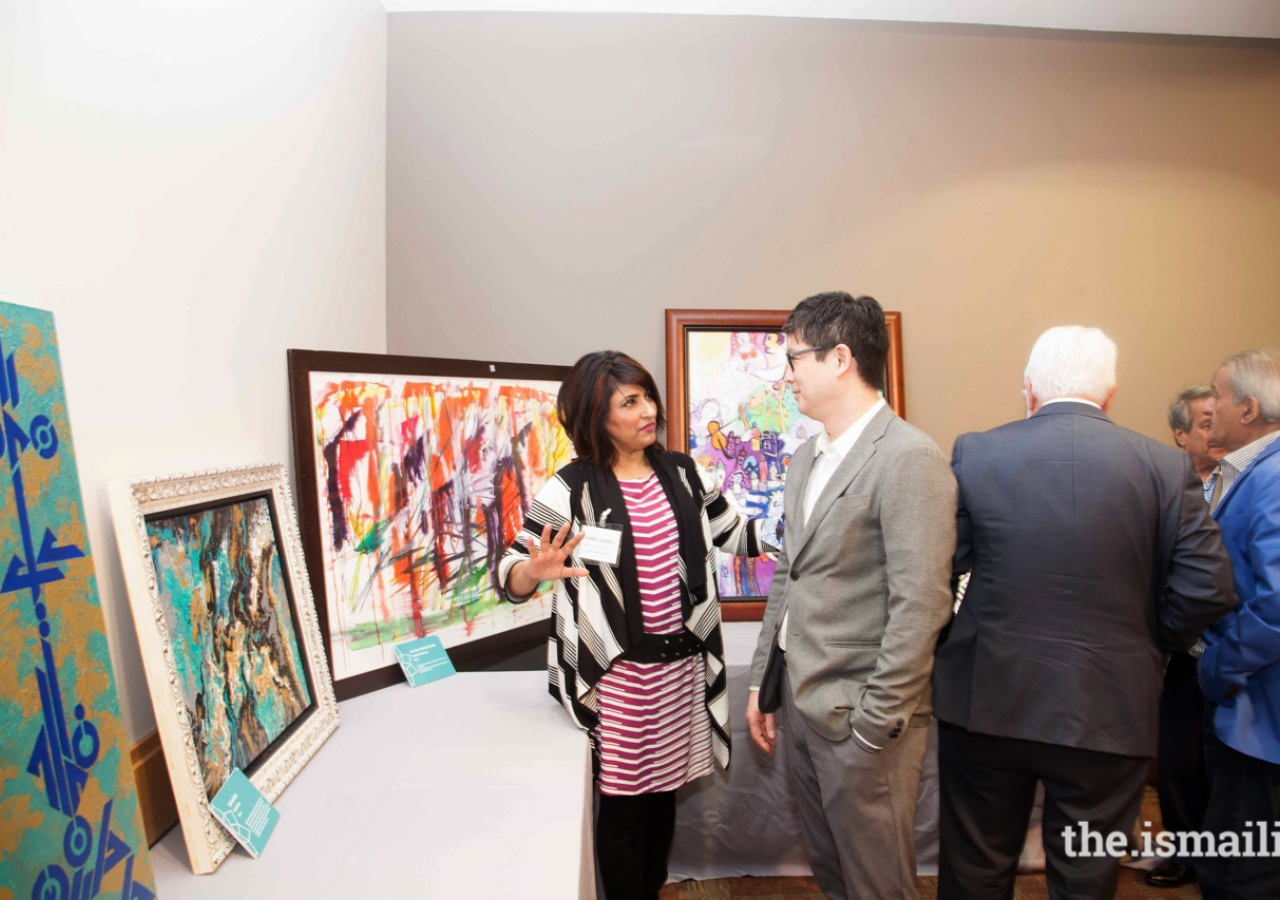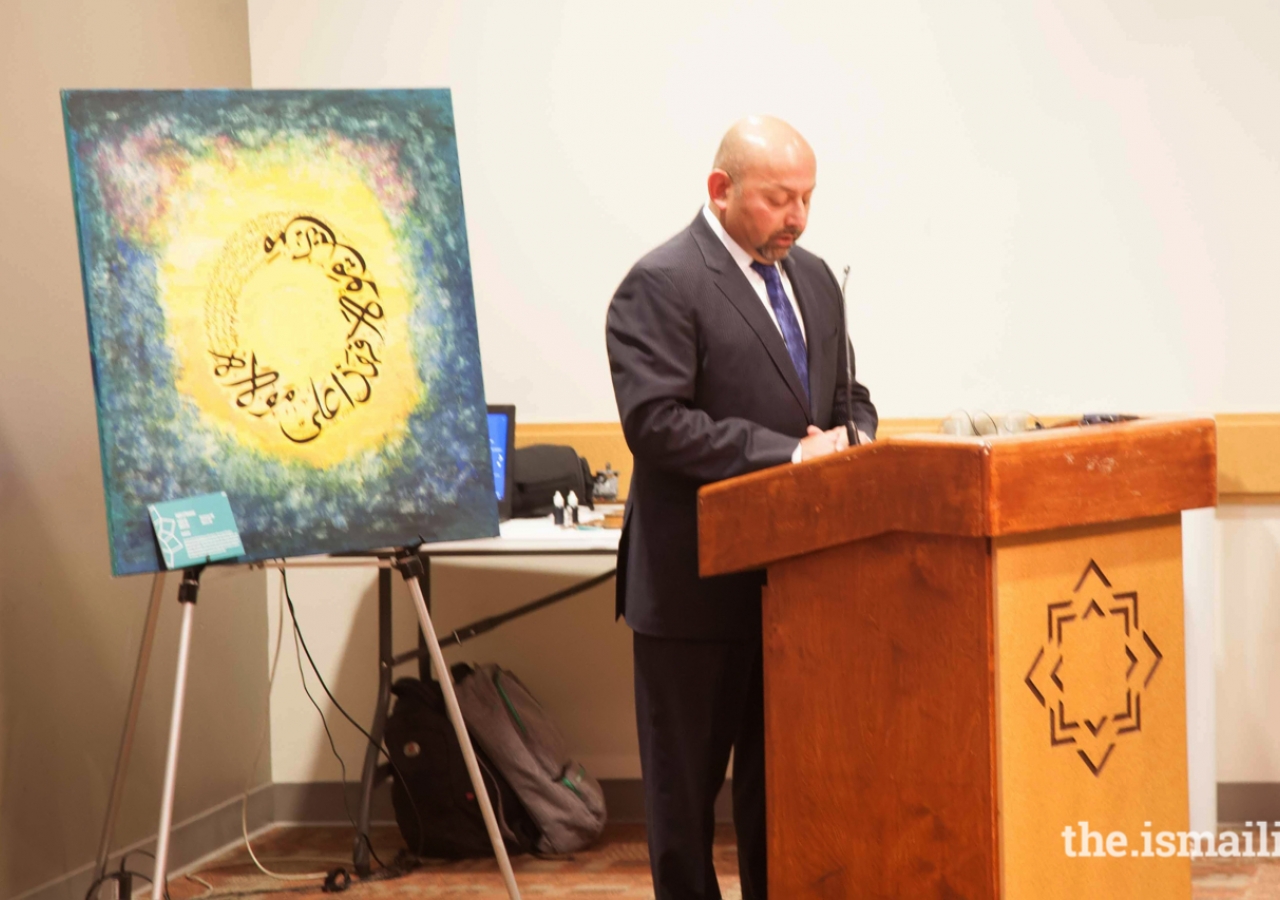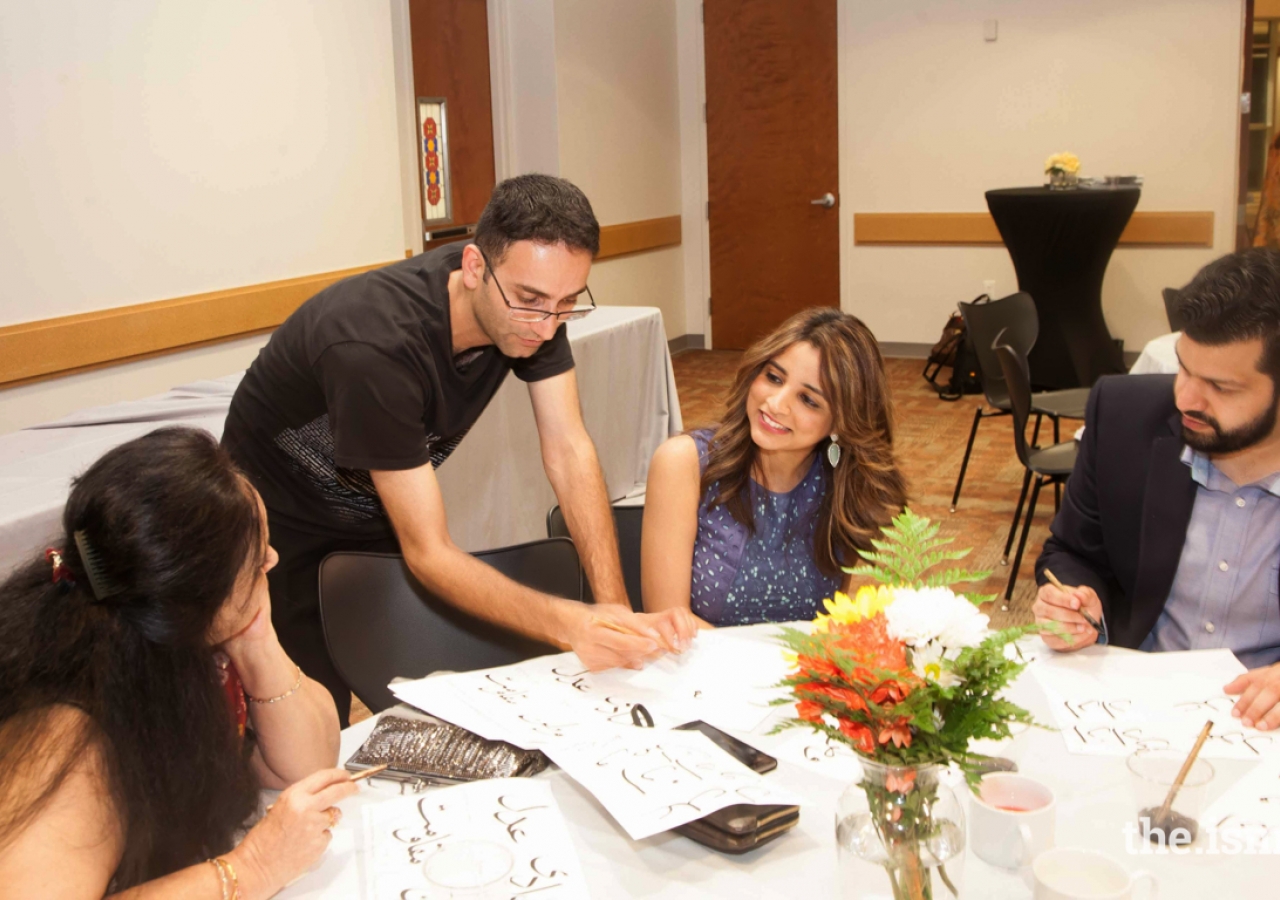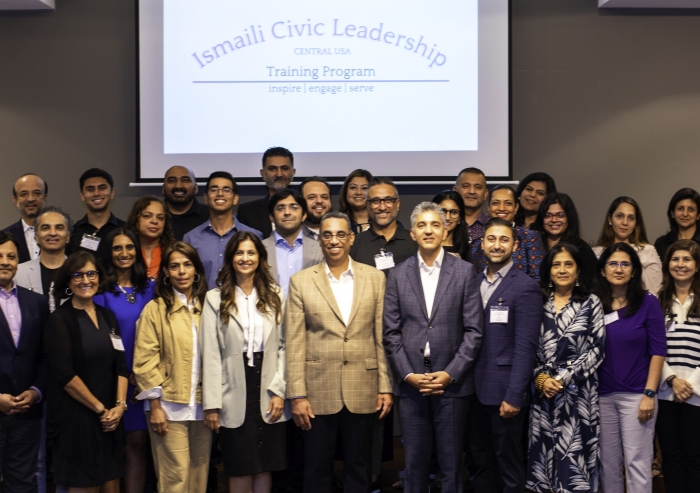The academic symposium sought to investigate art of various media arising from contact between Islamic and non-Islamic societies. Reflecting the theme, Ms. Belli added, “A cosmopolitan society regards the distinctive threads of our particular identities as elements that bring beauty to the larger social fabric.” Artists, art enthusiasts, and academics gathered to consider artworks from the eighth century to the present, and to engage in meaningful dialogue on interculturalism.
shawn_-_img_0247.jpg
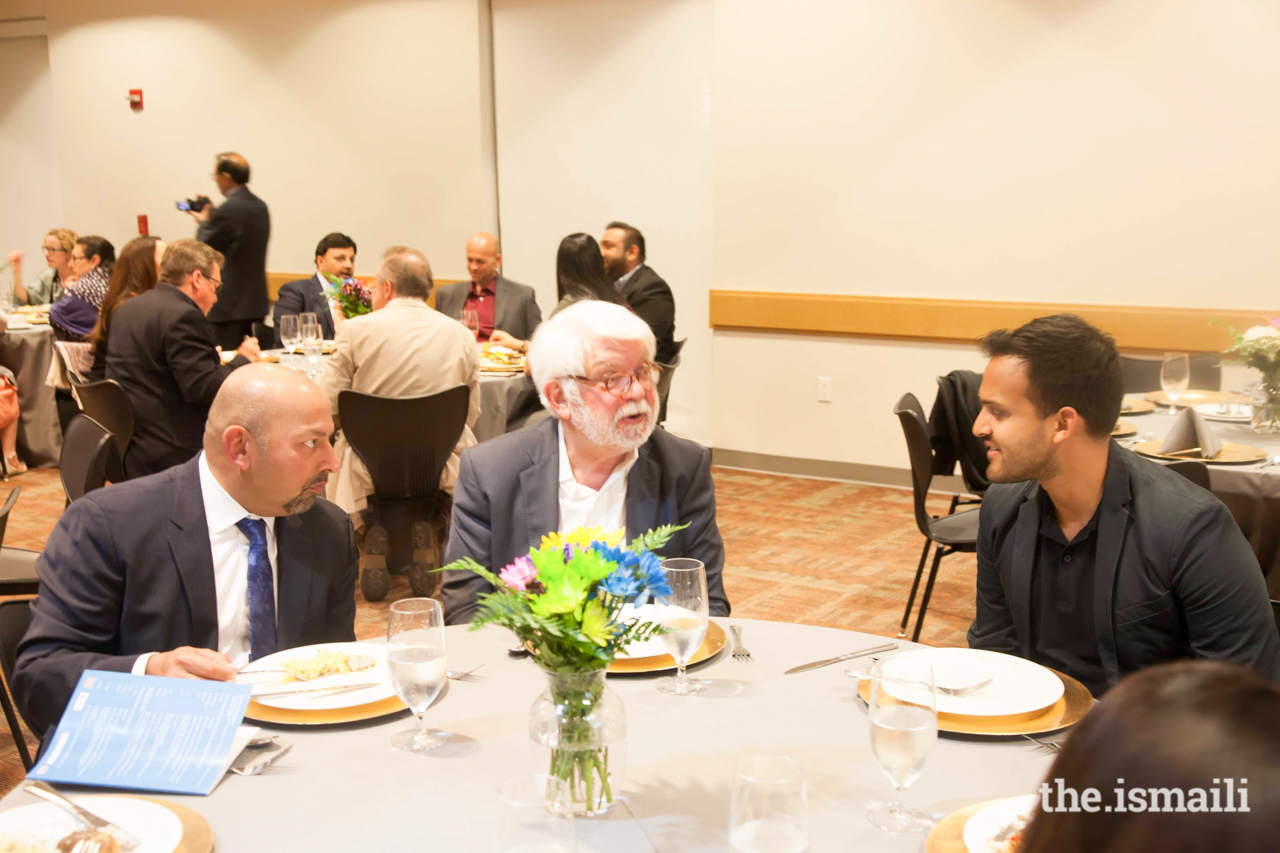
The first day of the symposium was held at the University of Texas at Dallas, and included speeches, panels, and a keynote address given by Dr. Jonathan Bloom, professor of Islamic and Asian Art at Boston College, on the topic of Fatimid objects in European churches. The evening ended with a performance by Bahman Panahi entitled “Musicalligrahy: the relationship between calligraphy and music.”
“When I saw the list of speakers, I was thrilled,” said Alicia Walker, Associate Professor of History of Art on the Marie Neuberger Fund for the Study of Arts. “These are people who are doing really important work, a lot of which has been really formative to my own scholarship and work that is intellectually generous.”
Walker, a Harvard alumna, was involved with the Aga Khan Program in Islamic Architecture while studying Byzantine art in graduate school. She finds Hazar Imam’s projects integral to the work she is doing now, almost twenty years later. During the Symposium, she spoke on the subject of cross-cultural artistic interaction while on a panel for "Islam, Art, & The Medieval World."
“For me, the kind of art history that I learned as an undergraduate left a lot of questions unanswered,” Walker said. “It was the type of art history that tended to think of cultures as silos and insisted that one had to master a tradition within its political boundaries. I would constantly see hints and glimpses of connection but no one talked about it.”
Walker used this realization to fuel the project which she presented at the symposium. Her research discussed how connections to the Islamic world are integral to understanding the ideologies of power in Byzantium.
On the second day, the symposium moved to the Horchow Auditorium at the Dallas Museum of Art and included further discussion as well as a tour of the Keir Collection at the Dallas Museum of Art. Among the speakers was Jason Moriyama, a lead design partner for Moriyama and Teshima Architects. In 2010, the firm was awarded the Aga Khan Award for Architecture for its work on the Wadi Hanifah environmental restoration project in Riyadh, Saudi Arabia. Recently, the firm was charged with designing the Aga Khan Museum and the Delegation of the Ismaili Imamat in Canada. At the Symposium, Moriyama channeled his experiences and gave an opening address on architectural intersections.
“I thought it was an excellent symposium,” Moriyama said. “Personally, I don’t get a lot of exposure to the art and the academic side of that discourse but I thought it was really critical to see it in this broader context of cosmopolitanism and this intersection of Islam and the West.”
Like Moriyama, Professor Azra Akšamija found immense value in the different levels of engagement. The Islamic cemetery in Austria that won a 2013 Aga Khan Award for Architecture included her design for the Qibla wall-curtain and rugs for the prayer room. Constructed of local materials in the context of local craft traditions, the Qibla draws on motifs of Islamic religious architecture, symbolically uniting the cultures of the region. The prayer rugs, stylistically in dialogue with the Qibla, were woven by women survivors of the war in Bosnia. This effort took nine years to mediate and required the collaborative effort of the Jewish, Catholic, and 95 different Muslim communities scattered across Austria. Because of her past experience with building bridges between local traditions, she found the lens through which the symposium was constructed—cosmopolitanism—to be a fruitful one.
“It makes you think about culture,” Prof. Akšamija said. “Not just Islamic culture, but more broadly as a concept. It was not isolated to thinking about one homogenous community, but really showed diversity and interactions between different cultures across time. It showed how this form of Islamic culture has informed or benefitted from these interactions. That, I think is very powerful.”
That evening, Shahzia Sikander, the first woman to teach Miniature Painting at the National College of Arts in Lahore gave the keynote address on multiculturalism. The night concluded with a reception at Plano Jamatkhana consisting of a formal dinner and a performance by the Ismaili Youth Choir. The reception also paid tribute to several Jubilee Arts participants, including Neelima Saha. Her collection, entitled “Beadiful,” showcased a variety of handmade necklaces, bracelets, earrings, and tasbihs.
Like many present, Neelima felt that she benefited from the exposure and was inspired to continue to grow in her craft and pursue other forms of the arts. “I went there to go and display my artwork but I came back with a lot of connections, a lot of friends, and a lot of experience,” she said,“Rather than just displaying my stuff, I learned a thousand times more.” Neelima befriended painters and musicians who helped her think outside the box and experiment with different mediums. Because of these interactions, she felt more unity and kinship with the Jamat and especially her fellow creatives.
“Art, architecture, and music are forces that build connections and are powerful avenues through which to understand our shared humanity, especially when faced with societal fragmentation,” said Salim Rahimi, Honorary Secretary of the Aga Khan Council for the Central United States, in his address, emphasizing the importance of using art as a way to connect with others on a larger scale.
Melia Belli echoed these sentiments, using the arts to bridge the gap between people of all backgrounds. “Guided by mutual respect, cosmophiles recognize that people are different, and there is much to learn from these differences,” she said. “Today, perhaps more than ever, it is imperative that we cultivate co-existence, have conversations, become citizens of the world, and recognize the possibilities that lay at these intersections.”


